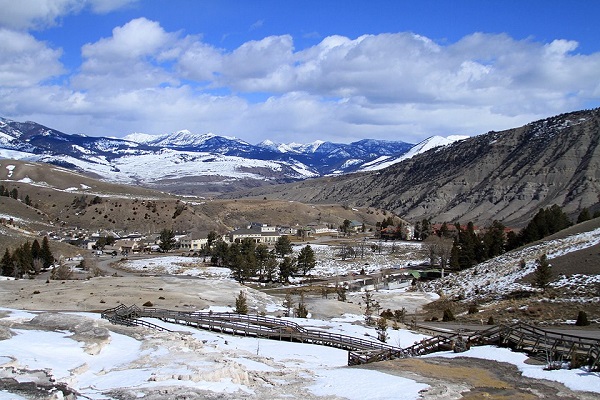Nearly a half-century after hydropower unplugged at Yellowstone National Park, it’s back. But don’t worry about any Hetch Hetchy-style environmental damage; this is a small project and, more importantly, it’s generating clean energy with zero new impact on park resources.
The new microhydro project, which went online in December, grabs energy from an already existing pipeline that feeds water downhill to a storage reservoir through a 12-inch pipe. (From there, the water is treated for use in the village of Mammoth Hot Springs at a hotel, restaurant, housing and other buildings, including the park headquarters.)

Intercepting that flow, the generator and turbine, housed in a new electrical station at the storage reservoir inlet, can produce up to 240 kilowatts of power, the Park Service said. With some downtime factored in, the system is expected to put out an average of 175 kilowatts.
Over the course of a year, that means Yellowstone should get about 1.2 million kilowatt-hours of electricity from the system, the Par Service said. That could trim about $73,000 off the park’s electrical bill and based on the $1.1 million cost of the project – paid for through the Recovery Act – that means the hydropower station will pay for itself in about a dozen years.
(Maintenance costs? Not much. According to the Billings Gazette, a park employee spends a couple of minutes a day checking up on the system and lubricates it from time to time, and the total annual operating costs are expected to be less than $5,000.)
All of this, and there’s the environmental payoff, too: greenhouse gas emissions reductions estimated at about 800 metric tons per year, all coming dam-free and with none of the downside impacts to fish and other species often associated with hydropower.
The Yellowstone system uses what’s called a Pelton wheel, a late-19th century advance on the traditional waterwheel. Instead of using the weight of water as its energy source, a Pelton wheel extracts energy from the impulse, or force, of the water. This makes it particularly good for situations like the one at Yellowstone, where there’s not a lot of water moving down the hill to the storage reservoir, but it’s moving quickly.
The key to the functioning of the Pelton wheel is its spoon-shaped buckets with a split in the middle that divides the water flow into two equal streams. Each flow is turned around nearly 180 degrees as it courses into and out of the buckets, allowing the wheel to capture nearly all of the water’s energy. So the wheel can spin at frighteningly high RPMs, while the water is left virtually stopped.
The installation of the microhydro project is part of Yellowstone’s effort to trim its GHG emissions by 15 percent but, ironically, it also represents something of a return to old ways at the park. Hydropower was first installed at Mammoth in 1903. Then, from 1911 until the mid-1960s a larger hydropower plant supplied Mammoth’s power, until needs outstripped production and the park unplugged the hydro and hooked into commercial power.